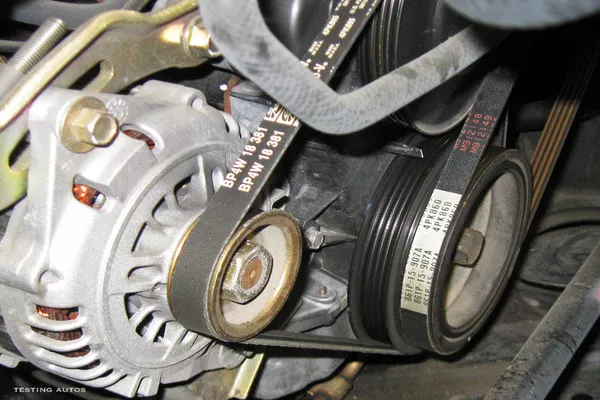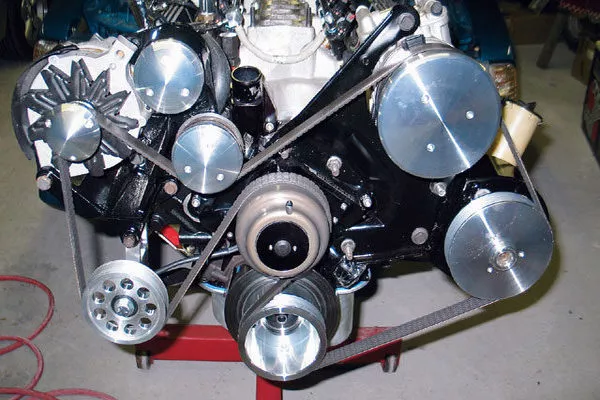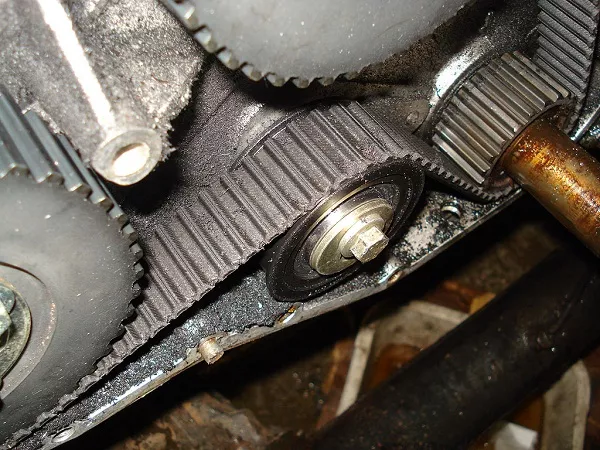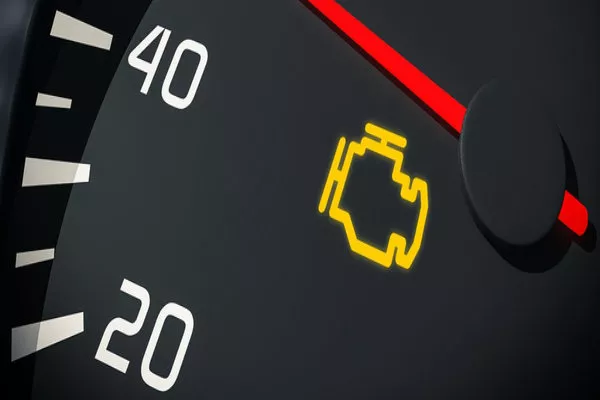An accessory drive belt plays an important role in the performance of your vehicle. This long loop of flexible material is connected to pulleys to deliver and transfer power.
For example, the crank shaft will generate power and it’s the drive belt’s job to transfer this to the alternator, to the power steering pump or to other parts of the car where it needs to be.
The drive belt is also known as serpentine belt due to its snake-like length and often rubber-infused material. An accessory drive belt can be made from a variety of components which can greatly determine their durability.

An accessory drive belt plays an important role in the performance of your vehicle
However, no matter how durable or good quality, your drive belt would still need to be replaced after a period of service. Read this article from Philkotse.com to find out when you should consider replacing it and how to do it without spending a single buck at the auto repair shop.
I. When should serpentine belts be replaced?
Experts advise that a single drive belt should be replaced after every 60,000 miles to 100,000 miles of distance traveled. However, this may vary depending on the quality of the belt and the way the driver uses his car.
Belts need to be made decently strong and durable in order to withstand the rigors of use. However, they do wear out, of course.

Experts advise that a single drive belt should be replaced after every 60,000 miles to 100,000 miles
II. What happens when your drive belt is old?
Drive belts can fray, tear, crack, peel, or suddenly have a shiny, reflective and glazed look -- signs that the component is old. It will also lose its resiliency and may tend to squeal or slip off the turning motors.
It might slip off or, worse, snap, break or split while you’re driving if it has become too worn out. Your car will most likely to stay in one location unless you get a new drive belt.

Drive belts can develop frays, tears, cracks, peels or suddenly have a shiny, reflective and glazed look
III. Signs that your drive belt needs to be replaced
You hear a chirping or squealing sound
This sound happens when the belt starts to slip off the running motors. The sound is produced by the friction created by the pulley and belt because they are no longer positioned correctly. This event is usually referred to as belt stretch wear or low belt tension.
However, this scenario cannot be blamed on the drive belt entirely. There are also occasions when belt slippage is caused by oil leaks. If you hear this sound from the engine, it’s best you get an expert to take a look at it immediately.
>>> Read more: Dealing with Faulty Fan Belts and Their Squeaking Sound

Squeaking sound from under the hood surely can be annoying and irritating
Loss of performance
Another sign that your drive or serpentine belt needs replacement is when your car is showing signs of system failure when losing horsepower. To put simply, the belt may not be delivering power from one part to another because it’s damaged or worn out and can no longer fulfill its duty. Some example scenarios could be:
- The power steering has stopped working.
- The battery is drained for no good reason.
- The engine suddenly stops.
These are just some examples of what could happen if you neglect your belts. You might end up having more bills to pay at the repair shop.
Check the engine light at your dash
The engine icon on your dash will most likely light up if the system detects anything wrong going on under the hood. This can include a variety of problems including a problem with your drive belt, so feel free to check it before driving further.
The engine icon on your dash will most likely light up if the system detects anything wrong going on under the hood
>>> For further reference: Basic Car Warning Signs You Should Know By Heart
III. How to replace the accessory drive belt
Step #1
Open the hood and disconnect the battery. It’s always a good precaution to keep yourself from being electrocuted -- whatever it is you’re working on. Use socket wrenches and loosen the nuts that hold the black cable to the car battery. After removing the negative cable, you can safely leave the positive cable attached.
Step #2
After precautionary measures, you can proceed to locating your car’s drive belt. Its location will depend on your manufacturer – it may be in the middle or over to the side.
If you don’t know where to find the drive belt, there may be engine covers hiding it. If you still can’t find it, refer to your manual or use the internet to help you locate the driver belt on your car.
Step #3
Once you find your car’s drive belt, look for signs of damage like possible tearing and fraying. Worn-out drive belts usually bear signs of rubber peeling off, cracking, and visible thinning.
How to Replace a Serpentine Belt in Your Car (Fan Belt)
Step #4
Before you proceed with removing the belt, study its routing diagram first. You should see this placed as a sticker somewhere on the engine bay where it is easy to see. If your engine bay doesn’t have a sticker, your car manual should give you all the info you need.
Step #5
Look for the self-adjusting tensioner. The opposite side of the drive belt rides on the tensioner and you would need a wrench to release the tension. Make sure you do this carefully as to not hurt yourself.
Step #6
You can now take the old belt off. Before putting the new drive belt on, run your hands on the tensioner pulley to feel if there’s any damage. You should also inspect the other parts connected to the pulley. Once you’re sure that everything is good, you can now install the new belt.
Step #7
Take your new belt and align its ribs to fit with the pulley grooves. Once you’re happy with the way you installed it, you can now tighten the tensioner.
>>> Click here to get more helpful tips and advice for your car maintenance.
Recent posts
- What does a car engine camshaft do? Jun 09, 2021
- Get to know engine types and 4 DIY tips to diagnose unhealthy ones Jan 12, 2021
- How does a timing belt in your car engine work? Feb 19, 2021
- 10 bad car noises Filipino drivers should look out for Mar 16, 2021













